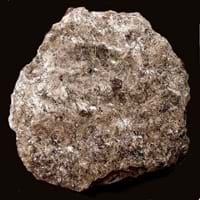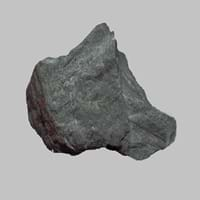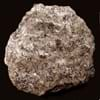Schist and Taconite
Definition
Definition
Schist is a medium grade metamorphic rock with medium to large, flat, sheet like grains in a preferred orientation
Taconite is a low-grade iron ore which belongs to sedimentary rock and containing about 27% iron and 51% silica
History
Origin
Unknown
Western Australia, Minnesota
Discoverer
Unknown
Newton Horace Winchell
Etymology
From French schiste, Greek skhistos i.e. split
From the name of Taconic Mountains in New England
Class
Metamorphic Rocks
Sedimentary Rocks
Sub-Class
Durable Rock, Medium Hardness Rock
Durable Rock, Medium Hardness Rock
Family
Group
Not Applicable
Not Applicable
Other Categories
Coarse Grained Rock, Fine Grained Rock, Medium Grained Rock, Opaque Rock
Coarse Grained Rock, Opaque Rock
Texture
Texture
Foliated, Platy
Banded, Trellis
Color
Black, Blue, Brown, Dark Brown, Green, Grey, Silver
Red, Reddish Brown
Maintenance
Less
Less
Durability
Durable
Durable
Water Resistant
Yes
Yes
Scratch Resistant
No
Yes
Stain Resistant
No
No
Wind Resistant
No
Yes
Acid Resistant
No
No
Appearance
Layered and Shiny
Layered, Banded, Veined and Shiny
Uses
Architecture
Interior Uses
Decorative Aggregates, Floor Tiles, Interior Decoration
Decorative Aggregates, Entryways, Flooring, Homes, Interior Decoration
Exterior Uses
Garden Decoration, Paving Stone
As Building Stone, Garden Decoration, Paving Stone
Other Architectural Uses
Not Yet Used
Curbing
Industry
Construction Industry
As Dimension Stone, Building houses or walls, Cement Manufacture, for Road Aggregate, Roadstone
As Dimension Stone, Used for flooring, stair treads, borders and window sills.
Medical Industry
Not Yet Used
Not Yet Used
Antiquity Uses
Artifacts
Artifacts
Other Uses
Commercial Uses
Used in aquariums, Writing Slates
As a touchstone, Cemetery Markers, Creating Artwork
Types
Types
Mica Schists, Calc-Silicate Schists, Graphite Schists, Blueschists, Whiteschists, Greenschists, Hornblende Schist, Talc Schist, Chlorite Schist, Garnet Schist, Glaucophane schist.
Not Available
Features
Easily splits into thin plates, Smooth to touch
Is one of the oldest rock
Archaeological Significance
Monuments
Not Yet Used
Used
Famous Monuments
Not Applicable
Data Not Available
Sculpture
Not Yet Used
Used
Famous Sculptures
Not Applicable
Data Not Available
Pictographs
Used
Not Used
Petroglyphs
Used
Not Used
Figurines
Not Yet Used
Used
Fossils
Absent
Present
Formation
Formation
Schist formed by dynamic metamorphism at high temperatures and pressures that aligns the grains of mica, hornblende and other elongated minerals into thin layers.
Taconite is a type of sedimentary rock formed when a river carries or transports pieces of broken rock as it flows. When the river reaches a lake or sea, its load of transported rocks settles or deposits at the bottom of sea or lake.
Composition
Mineral Content
Alusite, Amphibole, Biotite, Chlorite, Epidote, Feldspar, Garnet, Graphite, Hornblade, Kyanite, Micas, Muscovite or Illite, Porphyroblasts, Quartz, Sillimanite, Staurolite, Talc
Hematite, Magnetite, Quartz
Compound Content
CaO, Carbon Dioxide, MgO
Fe, Iron(III) Oxide, Silicon Dioxide
Transformation
Metamorphism
No
No
Types of Metamorphism
Not Applicable
Not Applicable
Weathering
Yes
Yes
Types of Weathering
Biological Weathering, Chemical Weathering, Mechanical Weathering
Biological Weathering, Mechanical Weathering
Erosion
Yes
Yes
Types of Erosion
Chemical Erosion, Coastal Erosion, Glacier Erosion
Chemical Erosion, Coastal Erosion, Glacier Erosion, Water Erosion, Wind Erosion
Properties
Physical Properties
Hardness
3.5-4
5.5-6
Grain Size
Medium to Fine Coarse Grained
Large and Coarse Grained
Fracture
Conchoidal
Uneven, Splintery or Conchoidal
Streak
White
White
Porosity
Highly Porous
Highly Porous
Luster
Shiny
Earthy
Cleavage
Slaty
Imperfect
Toughness
1.5
1.5
Specific Gravity
2.5-2.9
5-5.3
Transparency
Opaque
Translucent to Opaque
Density
2.8-2.9 g/cm3
Not Available
Thermal Properties
Specific Heat Capacity
Not Available
3.20 kJ/Kg K
1
Resistance
Impact Resistant, Pressure Resistant, Water Resistant
Heat Resistant, Impact Resistant, Pressure Resistant, Wear Resistant
Reserves
Deposits in Eastern Continents
Asia
Afghanistan, Bangladesh, Bhutan, China, India, Japan, Kazakhstan, Malaysia, Pakistan, Russia, Thailand, Turkey, Vietnam
China, India, Iran, Iraq, Oman, Russia, Saudi Arabia, Taiwan, Thailand, Vietnam
Africa
Egypt, Ethiopia, Morocco, Nigeria, South Africa
Kenya, Morocco, South Africa, Tanzania
Europe
Austria, England, France, Georgia, Germany, Italy, Liechtenstein, Monaco, Norway, Slovenia, Spain, Sweden, Switzerland
Austria, France, Greece, Italy, Malta, Poland, Portugal, Serbia, Spain, Sweden, United Kingdom
Others
Not Yet Found
Greenland, Mid-Atlantic Ridge
Deposits in Western Continents
North America
Canada, Costa Rica, Cuba, Mexico, Panama, USA
Canada, Mexico, USA
South America
Brazil, Colombia, Guyana
Bolivia, Brazil
Deposits in Oceania Continent
Australia
New South Wales, New Zealand, Queensland
New South Wales, Queensland, South Australia, Western Australia
All about Schist and Taconite Properties
Know all about Schist and Taconite properties here. All properties of rocks are important as they define the type of rock and its application. Schist belongs to Metamorphic Rocks while Taconite belongs to Sedimentary Rocks.Texture of Schist is Foliated, Platy whereas that of Taconite is Banded, Trellis. Schist appears Layered and Shiny and Taconite appears Layered, Banded, Veined and Shiny. The luster of Schist is shiny while that of Taconite is earthy. Schist is available in black, blue, brown, dark brown, green, grey, silver colors whereas Taconite is available in red, reddish brown colors. The commercial uses of Schist are used in aquariums, writing slates and that of Taconite are as a touchstone, cemetery markers, creating artwork.
|
||
|
||
|










